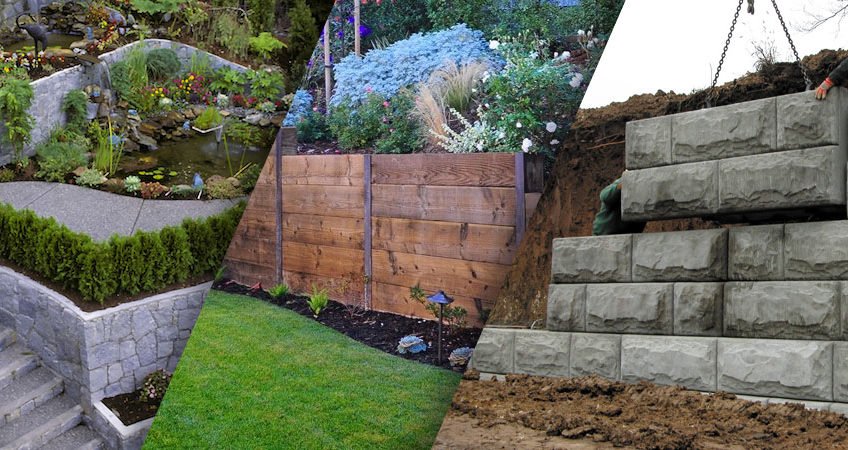Retaining walls can be a valuable addition to the garden, not only for providing support to a slope but for the aesthetic qualities that they have. Retaining walls can be made from many different materials but two of the most popular are concrete and timber. Here’s what you need to know about both of those materials so that you can make the best choice for your new retaining wall.
What You Need to Know about Concrete Retaining Walls
Concrete retaining walls are becoming more and more popular as concrete is such a strong, durable material. Retaining walls made from concrete will last for many years before they need replacing. There are three main types of concrete retaining walls – those made from poured concrete, those made from concrete sleepers, and those made from concrete blocks.
Concrete retaining walls, when properly reinforced are incredibly strong and so can support more weight than other retaining wall materials. They are also not susceptible to rotting, warping, splitting or termites, like timber can be. As well, concrete retaining walls offer incredible design flexibility as they can be finished in a number of different ways – using paint, using dyes in the concrete itself, giving the concrete a wood grain or stone finish, by cladding the concrete, by creating a textured finish, and so on.
Concrete retaining walls are generally more expensive than timber retaining walls which is something that you will need to keep in mind when you are setting your budget but a well built concrete retaining wall will last for 60 years or more, so it should never need replacing. Concrete retaining walls will also require more room than a timber retaining wall, so this is a consideration if you have limited space.
What You Need to Know about Timber Retaining Walls
Timber is a very popular choice for retaining walls as it is capable of a natural beauty that simply cannot be matched by concrete. You can create a range of looks depending on the type of timber that you use – rustic, country, modern, beach style, rainforest hideaway, and more. It is also relatively cheap and timber retaining walls are relatively easy to install. This is a huge part of their appeal for DIYers that just want to get out into the garden and do it themselves. As well, timber can be used by professionals to create attractive yet strong retaining walls.
However, there are some things to keep in mind with timber retaining walls. The first is that the timber has to be treated or suitable for in ground use as it will have constant contact with soil. Re-treating may also be necessary over the life of the retaining wall. Another thing to keep in mind is that timber retaining walls may not be as strong or as solid as retaining walls made from concrete. Simply speaking, you may not be able to build a retaining wall to the height that you need if you use timber. No matter how well you care for the timber, timber retaining walls will only last for around 20 to 25 years before they need replacing.
